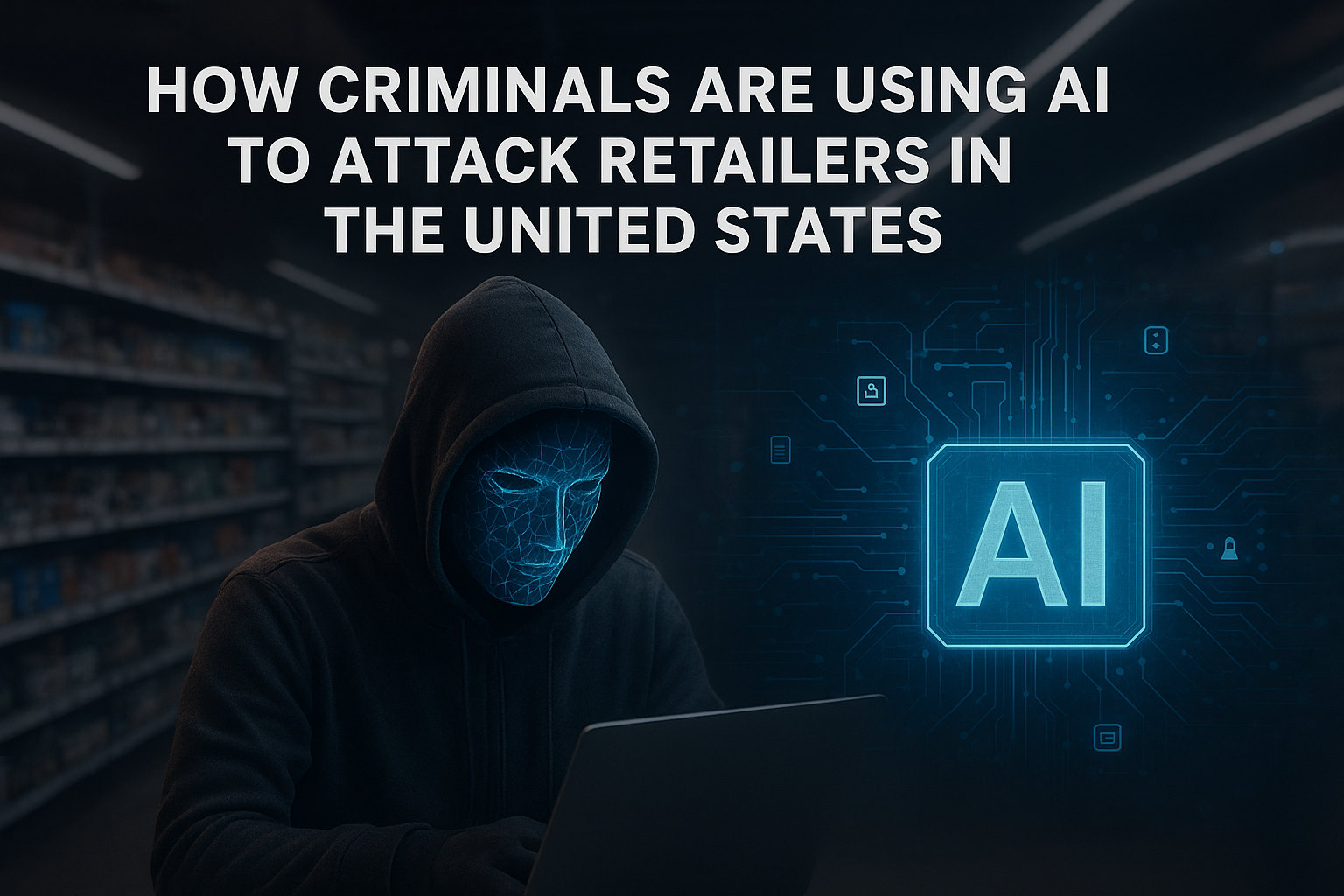In recent years, artificial intelligence (AI) has moved from being a futuristic promise to a real tool — both for retailers improving operations and for criminals exploiting vulnerabilities.
In this article, we’ll explore how criminals are leveraging AI to attack retailers in the United States, the most common methods used, the risks involved, and what can be done in terms of loss prevention.
Main Types of AI-Powered Attacks Against Retailers
Below are the most common attack vectors using AI or advanced automation:
1. Advanced Bots / “Bad Bots”
- Credential stuffing and spraying: leaked credentials are automatically tested on retail sites to hijack customer accounts. Bots are designed to look human by rotating IPs, disguising traffic, and adjusting speed to avoid detection.
- Automated purchasing & cart hoarding: bots instantly grab in-demand items at launch or during promotions, leaving real customers empty-handed and reselling later.
- Price and data scraping: bots extract product info, prices, and stock availability. Some use AI to bypass anti-scraping defenses.
2. Business Logic Abuse
Criminals exploit the way websites or e-commerce systems are structured:
- Manipulating discount codes or promotions with loopholes.
- Exploiting return/refund policies.
- Misusing legitimate features for fraudulent purposes (e.g., stacking discounts, exploiting shipping logic).
3. Exploiting Vulnerable APIs
Retail systems rely heavily on APIs for mobile apps, third-party integrations, and inventory systems. Attackers use AI to scan APIs for weaknesses and exploit them to:
- Extract customer data.
- Manipulate transactions.
- Automate large-scale attacks.
4. DDoS and Service Disruptions
Coordinated botnets can overload servers or APIs, causing downtime. AI enhances these attacks by timing them for maximum impact — for example, during holiday sales — leading to significant financial losses.
5. AI-Powered Phishing, Deepfakes, and Social Engineering
Retailers also face attacks where AI helps criminals:
- Generate realistic phishing emails, websites, or customer service messages.
- Fake identities or impersonate suppliers/partners.
- Trick employees into revealing credentials or granting access.
Real-World Examples and Data
- Research from Imperva shows that around 30.7% of AI-driven retail attacks involve business logic abuse.
- Another 20–25% are bad bot attacks, including scraping and credential stuffing.
- During peak sales events (e.g., Black Friday), account takeover attempts have been observed to increase 6× compared to normal traffic levels.
The Impact on Retail
AI-driven attacks bring a combination of financial, reputational, and operational costs:
- Direct financial losses: stolen products, fraudulent transactions, coupon abuse, refund scams.
- Chargebacks: banks or customers disputing fraudulent charges.
- Operational disruptions: website downtime, empty shelves, or slowed checkout.
- Reputation damage: loss of customer trust after breaches or fraud incidents.
- Security costs: increased spending on monitoring, audits, and cybersecurity staff.
Loss Prevention Strategies: What Retailers Can Do
Here are the key defenses retailers should deploy against AI-powered attacks:
| Measure | How to Implement |
|---|---|
| Continuous bot and anomaly detection | Behavior analysis (click speed, session patterns, IP reputation) to filter automated traffic. |
| API security reinforcement | Strong authentication, authorization, rate limiting, penetration testing. |
| Business logic validation | Audit coupon, pricing, and return policies for loopholes. Implement strict validation. |
| Multi-Factor Authentication (MFA) | Require MFA for admin accounts and sensitive customer actions. |
| Real-time monitoring & threat intelligence | Detect attacks early, share threat data across networks. |
| Peak period defense | Prepare infrastructure and security ahead of sales events or holidays. |
| Employee training & awareness | Educate staff on phishing and social engineering risks. |
| Data protection & privacy compliance | Encrypt sensitive data, monitor access, and minimize exposure. |
Challenges and Future Trends
- AI is becoming better at mimicking human behavior, making fraud detection harder.
- Generative tools can create convincing fake websites and brand impersonations.
- Retailers’ growing reliance on third-party APIs expands the attack surface.
- Privacy regulations (e.g., CCPA, GDPR) increase the cost of data breaches.
Final Thoughts: Securing Retail in an AI-Driven World
While AI offers tremendous benefits for retailers, it also empowers criminals with powerful new tools to exploit vulnerabilities. For loss prevention professionals, the key is to anticipate attacks — not just react to them.
By combining continuous monitoring, API security, business logic validation, employee training, and prepared infrastructure, U.S. retailers can significantly reduce the risks and costs of AI-driven attacks.
